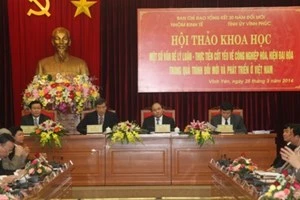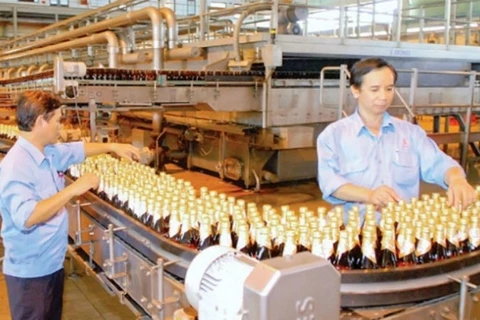Hanoi (VNA) – The Research Institute for Industry Policy and Strategy under the Ministry of Industry and Trade (MoIT) held a seminar in Hanoi on February 28 to collect ideas to build a strategy on industrial development until 2030, with a vision to 2045.
Director of the institute Nguyen Van Hoi said that the seminar is the very first step in drafting a new strategy to replace the industrial development strategy 2014 with a vision to 2025 as assigned by the Government.
The MoIT expects to submit the strategy to the Government for approval in the second quarter of 2020.
Duong Dinh Giam of the Vietnam Association of Economic Sciences said that in the context of international integration and on the basis of existing resources, from now until 2030, Vietnam should give the priority to completing the target of industrialisation and modernisation and becoming a modern industrial country.
It is also necessary to focus national resources on forming and developing several industries which have international competitiveness to participate more in the global value chain, Giam stated.
To become a modern industrial country after 2030 with a vision to 2045, Vietnam should focus on developing products which have high added and huge export values, developing support industry, applying high technologies in suitable fields, and gradually reducing the use of non-renewable minerals and simple labour.
He stressed the need for the State and the associations of industries to provide legal assistance for businesses to address trade conflicts in international markets.
Pham Tat Thang, senior researcher at the MoIT, said that along with agricultural and fishery products, such products as garments, footwear, and ceramics are potential exports.
To boost the export of these products, it is important to develop support industry and deep-processing industry, Thang stated, adding that it is also the development direction of the industrial sector in the next 20-30 years./.
Director of the institute Nguyen Van Hoi said that the seminar is the very first step in drafting a new strategy to replace the industrial development strategy 2014 with a vision to 2025 as assigned by the Government.
The MoIT expects to submit the strategy to the Government for approval in the second quarter of 2020.
Duong Dinh Giam of the Vietnam Association of Economic Sciences said that in the context of international integration and on the basis of existing resources, from now until 2030, Vietnam should give the priority to completing the target of industrialisation and modernisation and becoming a modern industrial country.
It is also necessary to focus national resources on forming and developing several industries which have international competitiveness to participate more in the global value chain, Giam stated.
To become a modern industrial country after 2030 with a vision to 2045, Vietnam should focus on developing products which have high added and huge export values, developing support industry, applying high technologies in suitable fields, and gradually reducing the use of non-renewable minerals and simple labour.
He stressed the need for the State and the associations of industries to provide legal assistance for businesses to address trade conflicts in international markets.
Pham Tat Thang, senior researcher at the MoIT, said that along with agricultural and fishery products, such products as garments, footwear, and ceramics are potential exports.
To boost the export of these products, it is important to develop support industry and deep-processing industry, Thang stated, adding that it is also the development direction of the industrial sector in the next 20-30 years./.
VNA






















